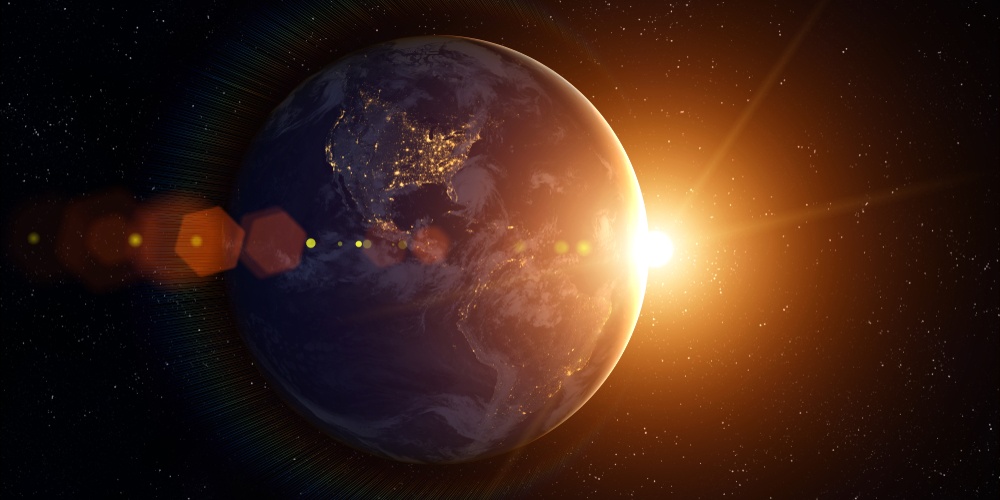
The Netziv, in his introduction to Sefer Shemot, notes that there is Gaonic tradition that refers to Shemot as chumash sheni, the second chumash. While Sefer Breisheet details the creation of the world, humanity, and the Jewish people, the creation story concludes only at Sinai, as the purpose of creation is manifest. The Sinaitic experience was preserved as the Divine Presence rested in the Mishkan (the Tabernacle).
It should thus not be surprising to find parallels between the story of creation in Genesis and the creation story in Shemot, specifically that of the Mishkan. These two creation stories link the physical and spiritual worlds into an integrated whole.
One of the first things one notices is the centrality of Shabbat. Our Sages teach that man, as the pinnacle of creation, was created last. Yet in truth, man was only the last of the physical creations. “G-d blessed the seventh day and He declared it to be holy”. Of all that was created, only Shabbat is referred to as holy.
Though the command to observe Shabbat is written in the aseret hadibrot—and was actually given earlier when the Jews camped at Marah—it is repeated both when the Torah finishes its description of the Miskhan in parshat Ki Tissa and at the beginning of our parsha, when Moshe gathers the people. Before he commands them regarding the construction of the Mishkan, he commands that, after six days of work, the seventh day is to be “holy”. It is this juxtaposition that led our Sages to deduce that the construction of the Mishkan must cease on the Shabbat, and thence to derive all of the laws governing our conduct on Shabbat today.
In the original creation story, man sins and is driven out of the garden of Eden. The Torah notes that G-d “stationed the cherubim east of Eden, along with the revolving sword blade, to guard the path of the Tree of Life (Breisheet 3:24). Yet it was these “same” cherubim that adorned the ark, the central feature of the Mishkan. While we were driven from the presence of G-d in Eden, G-d reveals His presence in the Mishkan.
“Whoever adds, detracts” is one of the lessons our Sages derive from the tragic story of man’s expulsion from Eden. Though G-d had only commanded that man not eat from the Tree of Knowledge, Eve told the snake that it was not permitted to touch it, lest they die. This addition to G-d’s command was the opening that allowed the snake to entice Eve to eat. Just as she did not die from touching the tree, so, too (argues the snake), there is no reason to fear eating from the tree. “The Torah of G-d is pure”, and we must ensure that we neither subtract from, nor add to, G-d’s commands. In light of this concept, we can understand the seemingly strange request of Moshe as donations came pouring in to build the Tabernacle. “And they said to Moshe, ‘The people are bringing much more than is needed for the work that G-d commanded to do’. Moshe commanded that they announce in the camp, ‘Let no man or women bring any more material for the sacred offering’” (36:5-6). The Mishkan was to be built to exact specifications, no more and no less; only in such a fashion could it serve as atonement for the sin of Eden.
Interestingly, the Torah notes on a number of occasions that Oholiav ben Achisamach, who was Bezalel’s assistant in the construction of the Mishkan, was from the tribe of Dan, a seemingly trivial detail. Dan means "to judge," and judgment must be exacting, “piercing the mountain”. “Dan will judge his people” (Breisheet 49:16), Yaakov declares. The Mishkan is our testimony that we have met with a favourable judgment, that G-d has forgiven our sins (see Rashi).
“And the land was without form and empty, with darkness on the face of the depths, and G-d’s spirit hovered on the surface of the waters”. So begins the story of creation. “And G-d said, ‘Let there be light’”. But it is the Jewish people who must bring light into the world, symbolized by our lighting of the ner tamid, the eternal light in the mishkan.
Creation begins with nothingness, with tohu vevohu. The story of creation ends in the last verse of the “second book”. “For the cloud of G-d would be on the Tabernacle by day, and fire would be on it by night before the eyes of all of the children of Israel, throughout their journeys”. It is up to man to ensure that it is the cloud of G-d that hovers over us.



